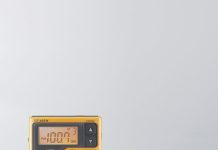Curiosity strikes as nightfall descends upon us, for it is during these dark hours that hurricanes unleash their relentless fury.
As we stand in awe, witnessing the power of nature’s wrath, we ponder the very essence of this phenomenon.
What about the night that beckons hurricanes to strike with such ferocity?
Through the exploration of scientific explanations and a glimpse into the intricate workings of Earth’s atmosphere, we embark on a journey to unearth the reasons behind the nocturnal tendencies of these formidable storms.
Review contents
The Science Behind Hurricanes
Hurricane Formation
Hurricanes, also known as tropical cyclones, form over warm ocean waters when the atmospheric conditions are favorable. They originate as a cluster of thunderstorms that start to rotate due to the Earth’s rotation and the Coriolis effect. As warm, moist air rises from the ocean’s surface, it condenses and releases latent heat, further fueling the storm. This process creates a low-pressure area that draws in more warm air, causing a cycle of intensification and further rotation. The storm is classified as a hurricane when wind speeds reach a sustained level of at least 74 miles per hour.
Dynamics of a Hurricane
A hurricane is a complex system with distinct regions and powerful dynamics. The eye of the storm is a relatively calm center surrounded by the eyewall, a ring of intense thunderstorms. The eyewall is where the strongest winds and heaviest rainfall occur. Outside the eyewall, bands of rain and thunderstorms spiral outward. The size and intensity of a hurricane depend on various factors, such as sea surface temperature, atmospheric stability, and wind shear.
Hurricane Tracks and Landfall
Once a hurricane forms, its path or track is influenced by various factors. Large-scale atmospheric patterns, such as high-pressure systems and the jet stream, play a crucial role in steering hurricanes. However, a hurricane’s exact path can be difficult to accurately forecast due to the complex interactions between the storm and its surrounding environment.
When a hurricane approaches land, it may undergo changes due to its interaction with the landmass. The friction and disruption caused by land can weaken the storm or alter its track. The storm’s strength, angle of approach, and the topography of the coastal region also influence the impact it will have when it makes landfall.
Hurricane Diurnal Variation
Understanding Diurnal Variation
Diurnal variation refers to the regular daily cycle of atmospheric conditions that affect weather patterns. This variation is also observed in hurricanes. During the day, the heating of the Earth’s surface leads to the formation of convective clouds and thunderstorms. In contrast, nighttime conditions favor a decrease in convective activity due to the lack of sunlight and the cooling of the surface.
Factors influencing Diurnal Variation
Several factors influence the diurnal variation of hurricanes. One key factor is solar radiation. The sun’s energy heats the surface and fuels convective processes, leading to more vigorous daytime convection. Another factor is the stability of the atmosphere. At night, stable atmospheric conditions inhibit the vertical motion of air, reducing the strength of convective activity.
Nighttime Conditions Conducive to Landfall
The nighttime conditions during a hurricane may create a more favorable environment for landfall. With reduced convective activity, less rainfall may occur, leading to lower flood risks. Additionally, the absence of direct sunlight can result in cooler surface temperatures, which may help weaken the storm. However, other factors, such as wind shear and the storm’s interaction with land, can still significantly impact the outcome of a nighttime landfall.
Factors Affecting Landfall Timing
Interaction with Land
When a hurricane approaches land, its interaction with the landmass can impact the timing of landfall. As the storm moves closer, it begins to experience increased friction from the land, which can slow its progress. Topographical features, such as mountains or hills, can further disrupt the storm’s structure or redirect its path. These interactions can delay or accelerate the timing of landfall, making accurate predictions challenging.
Oceanic Heat Content
The oceanic heat content (OHC) is a critical factor in hurricane development and intensity. Higher OHC values indicate a more extensive reservoir of warm water from which hurricanes can draw energy. The distribution of warm water in the ocean influences the timing of landfall. If a hurricane encounters waters with sufficient heat content before reaching land, it may strengthen and delay landfall. Conversely, encountering calmer waters can cause a storm to weaken more rapidly.
Atmospheric Stability
The atmosphere’s stability near the coast can affect the timing of landfall. A stable atmosphere inhibits the vertical motion of air, which can reduce the intensity and size of convective cells within the storm.
Less convective activity can lead to a quicker landfall, as the storm may lack the necessary energy to sustain itself. Conversely, an unstable atmosphere with strong convection can contribute to a slower-moving storm and delayed landfall.
Importance of Sea Surface Temperature
Factors Influencing SST
Sea surface temperature (SST) is crucial in hurricane formation and intensity. Warm ocean waters provide the energy needed to fuel a hurricane’s growth. Several factors influence SST, including solar radiation, ocean currents, and weather patterns like El Niño and La Niña. Additionally, factors like upwelling and mixing of deep ocean waters can bring cooler temperatures to the surface, potentially weakening a hurricane.
Effect of SST on Hurricane Intensity
Higher SST values generally lead to more intense hurricanes. Warm surface waters provide the necessary heat and moisture for the storm to develop and maintain its energy.
As a hurricane moves over warm waters, it can extract heat and moisture, allowing it to strengthen. A robust hurricane with access to warmer SST may delay landfall as it maintains its intensity, posing a more significant threat to coastal regions.
SST and Nighttime Cooling
During the nighttime hours, SST can play a significant role in the cooling process of a hurricane. Without the heating effect of sunlight, the warmer surface waters lose heat more slowly, potentially maintaining higher SST values.
This can contribute to the persistence of a storm’s intensity, especially during nighttime landfall events. However, other factors, such as wind shear and atmospheric stability, continue to impact the storm’s behavior.
Influence of Atmospheric Conditions
Nocturnal Surface Cooling
Nocturnal surface cooling refers to the Earth’s surface losing heat during nighttime. This cooling effect leads to stabilized atmospheric conditions, where the temperature difference between the surface and upper levels of the atmosphere decreases. As a result, nocturnal conditions can contribute to reduced convective activity and weaker storms during the nighttime hours.
Stable Atmospheric Conditions
Stable atmospheric conditions tend to prevail during the nighttime, inhibiting air’s vertical movement. In the context of hurricanes, this stability can limit or weaken the intense convective activity typically associated with these storms. However, it is essential to note that other factors, such as the storm’s intensity and interaction with land, can still influence the outcome of a nighttime landfall.
Decreased Wind Shear
Wind shear, the change in wind speed or direction with height, influences a hurricane’s structure and intensity. During nighttime, wind shear is often reduced due to the nocturnal cooling effect. A hurricane can maintain a more symmetric and organized circulation with less shear, potentially prolonging its intensity and delaying landfall. However, other factors, such as atmospheric stability and the storm’s interaction with land, can counteract the effects of decreased wind shear.
Interaction with Landmass
Momentum Transfer
When a hurricane encounters a landmass, it experiences momentum transfer due to the increased friction between the storm and the surface. This frictional interaction can slow the storm’s forward speed, leading to delayed landfall. Additionally, the land’s resistance interferes with the storm’s structure, potentially causing changes in its intensity or direction.
Land’s Cooling and Stabilizing Effects
Land surfaces generally cool faster than ocean surfaces, producing cooler air near the coast. This cooling effect can stabilize the lower levels of the atmosphere and reduce the intensity of convection within the hurricane. The land’s potentially stabilizing influence can contribute to a quicker landfall and a weakened storm than if the storm remained over warm ocean waters.
Effects of Topography
Topographical features, such as mountains, hills, and coastlines, can significantly impact the behavior and intensity of a hurricane. As a storm interacts with these land features, it may experience changes in wind patterns, rainfall distribution, and storm surge dynamics. Mountains may act as barriers, causing the storm to weaken or redirect. In contrast, coastlines and low-lying areas can amplify the effects of storm surges, increasing the risks associated with landfall.
Climatological Factors
Diurnal Land-Sea Temperature Differences
The temperature differences between land and sea exhibit diurnal variations and contribute to atmospheric circulation patterns. During the day, the land heats up faster than the ocean, creating a pressure gradient that initiates land-sea breezes. These breezes can influence the movement and track of hurricanes, potentially leading to variations in landfall timing based on the diurnal temperature differences.
Hurricane Season Timing
The timing of the hurricane season varies depending on geographical location. In the Atlantic basin, the season lasts from June 1st to November 30th, peaking between August and October. Understanding the seasonal variations in atmospheric conditions, such as wind patterns and sea surface temperature, helps assess the likelihood and timing of hurricane formation and landfall.
Global Distribution of Hurricanes
Hurricanes occur in different regions worldwide, primarily in tropical and subtropical areas. The Atlantic, Pacific, and Indian Oceans are the main basins where hurricanes develop. Within these basins, the distribution of hurricanes varies due to regional climate patterns, such as monsoon systems, El Niño and La Niña events, and other local atmospheric and oceanic factors.
Human Perspective and Awareness
Visibility challenges
Hurricanes that landfall during nighttime hours pose visibility challenges for the public and professionals involved in monitoring and response efforts. The darkness and heavy rainfall associated with hurricanes can limit visibility, making assessing the storm’s intensity, track, and potential hazards difficult. Adequate lighting, advanced radar systems, and improved communication channels are crucial in overcoming these challenges.
Timing of Public Alerts
Providing timely and accurate alerts regarding an approaching hurricane is essential for public safety. Predicting the exact timing of landfall can be challenging, especially during nighttime events. Therefore, issuing timely warnings and encouraging preparedness measures well in advance becomes crucial, regardless of the landfall timing. Relying on advanced forecasting techniques and efficient communication systems can help minimize the risks associated with nighttime landfall events.
Safety Precautions
Regardless of the timing of landfall, individuals and communities must take appropriate safety precautions when facing a hurricane threat. These precautions include securing homes, evacuating low-lying areas if necessary, stocking up on essential supplies, and following instructions issued by local authorities. Education and awareness campaigns should emphasize the importance of preparedness efforts irrespective of the time of landfall.
Case Studies
Hurricane Sandy (2012)
Hurricane Sandy, also known as Superstorm Sandy, landed on the U.S. East Coast in late October 2012. Its landfall occurred during the evening hours, showcasing the impact of a nighttime landfall event. The storm’s intensity, combined with high tide and the shape of the coastline, led to significant storm surges and flooding in coastal areas. Sandy highlighted the challenges of nighttime visibility and the importance of timely public alerts and preparedness measures.
Hurricane Irma (2017)
In September 2017, Hurricane Irma, one of the most powerful Atlantic hurricanes, struck several Caribbean islands and the southeastern United States. The storm’s landfall in Florida occurred during the morning, contrasting with the typical nighttime landfall scenario. However, understanding the diurnal variations and atmospheric conditions during a storm of Irma’s magnitude remained crucial for ensuring public safety and implementing effective evacuation and response strategies.
Hurricane Florence (2018)
Hurricane Florence landed on the U.S. East Coast in September 2018 in the early morning hours. The timing of landfall allowed for better visibility and daylight response efforts.
However, the storm’s intensity and slow movement resulted in prolonged heavy rainfall and flooding. Florence emphasized the significance of understanding the overall dynamics of a hurricane beyond landfall timing and the need for comprehensive preparedness and response plans.
Conclusion
Understanding the complexities of hurricanes involves considering a wide range of scientific factors. The formation, dynamics, and behavior of hurricanes are influenced by various atmospheric and oceanic conditions and their interaction with land.
While the timing of landfall, including nighttime events, presents unique challenges, it is vital to focus on overall preparedness efforts and awareness campaigns to ensure public safety.
Efforts to mitigate the impacts of hurricanes and improve forecasting capabilities are ongoing. Continued research into the factors affecting hurricane intensity, landfall timing, and regional variations will contribute to better understanding and preparedness.
By combining scientific knowledge with effective communication and proactive measures, societies can minimize the risks and maximize the safety of coastal communities in the face of these powerful, natural phenomena.





































